The Franciscan presence in Brazil can be traced back to the Discovery, when Friar Henry of Coimbra, a member of the Cabral’s Expedition, celebrated the First Mass on 22 April 1500, shortly after arriving at the bay of Port Seguro, in the south of what is now the state of Bahia.
But it wasn’t until the last quarter of the 16th century that the Order of the Friars Minor of St. Francis finally established itself on colonial soil. In 1583, the third grantee of the Captaincy of Pernambuco, Jorge de Albuquerque Coelho, asked the Minister General of the Franciscans in Portugal to found the Custody of Saint Anthony of Brazil, which was approved by royal charter on 12 October of that year and later ratified by the Pope.
This period corresponds to the Iberian Union (1580-1640), when Philip II’s Catholic Spain cut off trade between Portugal and the Calvinist Netherlands, damaging the sugar economy of the northeast. Economic monopoly problems, coupled with religious conflicts, increased the risk of Dutch invasions.

The establishment of religious orders in the Brazilian colony began with the Jesuits in 1549, during the installation of the General Government, and intensified with the arrival of the Carmelites (1585) and the Benedictines (1595).
Colleges, monasteries and convents became not only centres of education and catechesis but also of religious militia, territorial protection and urban development.
The first Franciscan convent was founded in Olinda, the seat of the captaincy of Pernambuco and the wealthiest city in the colony, with the largest number of sugar mills, surpassing even Salvador.
The first Custos of the Franciscan Convent of Olinda – the highest rank in the Franciscan hierarchy – was Friar Melchior de Santa Catarina, a native of Rezende de Lamego. He left Portugal with eight religious on 1 January 1585 and arrived in Olinda on 12 April.
The Chapter House of the Custody was initially housed in the Chapel of Nossa Senhora das Neves and later in the Convent, built with the support of a wealthy local widow, Maria Rosa, who lived in seclusion with other women, including D. Izabel, D. Cosma and D. Felippa de Albuquerque, daughters of Jerônimo. Izabel, Cosma and Felippa de Albuquerque, daughters of Jerônimo de Albuquerque, brother-in-law of Duarte Coelho Pereira, the first donor of Pernambuco.
Maria Rosa was also the first Sister of the Third Order of St Francis in Brazil, who took the habit in an oratory dedicated to St Roque, built by a Franciscan friar before the convent was built.
Layer religious brotherhoods, such as the Third Order, played a fundamental social, economic, political and cultural role. Their members, usually white and distinguished, built their devotional chapels next to the monasteries, sometimes even a house of prayer with ancillary buildings such as a gatehouse, cloister, consistory, sacristy and library.
For sixty-five years, the Custody of St Anthony of Brazil was subordinate to the Province of St Anthony of the Streams in Portugal, but in 1649, with papal approval, it became independent and moved its headquarters to Salvador.
In 1657 it was raised to the category of Province and two years later, at its First Chapter, the Custody of Our Lady of the Conception was founded, for the monasteries of the coastal region of the Southeast (Espirito Santo, Rio de Janeiro and São Paulo), separating them from those of the Northeast (Paraíba, Pernambuco, Alagoas, Sergipe and Bahia).
This new Custody became a Province in 1675, with its seat in the Convent of Santo Antônio in Rio de Janeiro, now in São Paulo.
In the course of two centuries, twenty-three Franciscan monasteries were built in Brazil, of which nineteen remain, thirteen of them in the Northeast Region.
These 19 Franciscan monasteries in Brazil are listed in chronological order:
- Convento de São Francisco, in Olinda – PE (founded in 1585; rebuilt at the end of the 17th century);
- Convent of São Francisco, in Salvador – BA (founded in 1587; rebuilt in 1686);
- Monastery of Saint Anthony, in Igaraçu – PE (founded in 1588; rebuilt in 1661);
- Convent of St Anthony, at João Pessoa – PB (founded 1589-90; rebuilt 1700-1710);
- Convent of St Francis, in Vitória – ES (founded 1590/1);
- Convent of Santo Antônio, in Rio de Janeiro – RJ (founded c. 1606-7; rebuilt mid-18th century);
- Monastery of Santo Antônio, in Recife – PE (founded in 1606; rebuilt in 1654);
- Monastery of Senhor Santo Cristo, in Ipojuca – PE (founded in 1606; rebuilt in 1654);
- Convent of Santo Antônio, in São Francisco do Conde – BA (second half of the 17th century);
- Convent of St. Francis, in Serinhaém – PE (founded in 1630; rebuilt in 1654);
- Convent of St Anthony, at Santos – SP (founded in 1639);
- Convent of St. Anthony, in Cairu – BA (built between 1650 and 1654);
- Convent of Nossa Senhora da Penha do Espírito Santo, in Espírito Santo (founded in 1650);
- Convent of Our Lady of the Conception, in Itanhaém – SP (1655);
- Convent of Santo Antônio de Paraguaçu/Iguape – BA (built in 1658; currently in a precarious state);
- Convent of São Cristóvão, in Sergipe (built in 1658 or 1693);
- Convent of Nossa Senhora dos Anjos, in Penedo – AL (built around 1682 or 1689);
- Convent of St Francis, in Marechal Deodoro – AL (built between 1660 and 1684);
- Convent of São Boaventura, in Itaboraí – RJ (built in 1660; now in ruins);
- Convent of Bom Jesus da Coluna, in Rio de Janeiro (built in 1705).
The National Institute of Historical and Artistic Heritage (IPHAN) has recently proposed the inscription of these thirteen northeastern convents on the UNESCO World Heritage List. This article summarises the research coordinated for this purpose, which analysed the monuments from the perspectives of art history, architecture and their urban setting.
Video on the history of Franciscan monasteries and churches in the colonial period
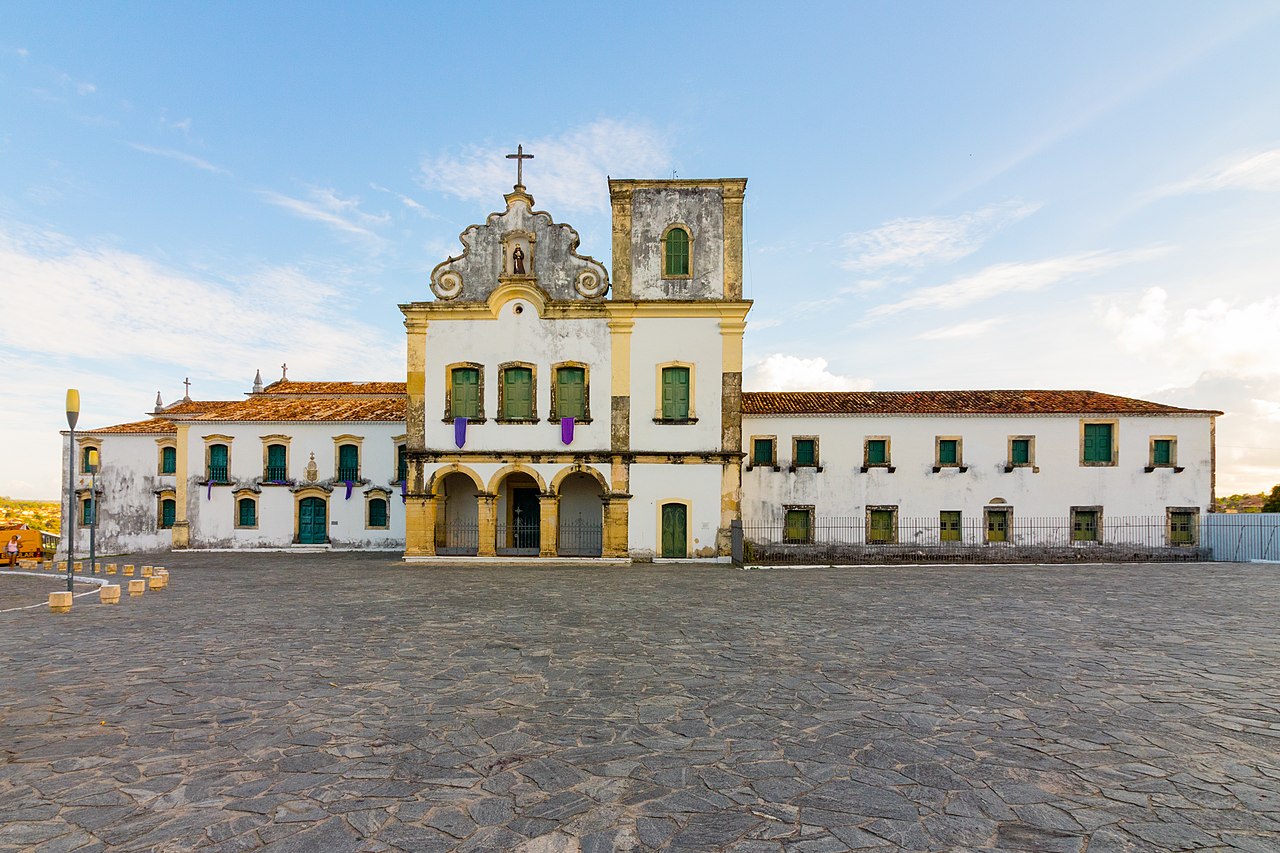
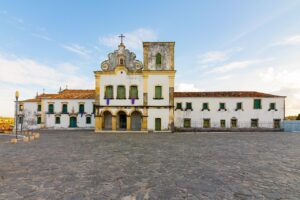
Convento de São Francisco em São Cristóvão SE02:10
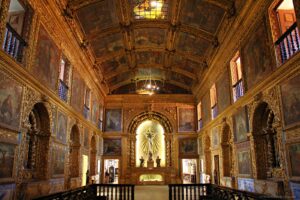
História da Capela Dourada em Recife03:05
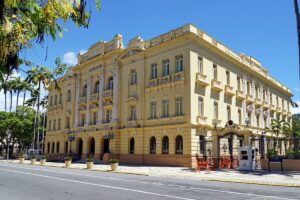
História do Palácio do Campo das Princesas em Recife13:25

História do Convento Franciscano de Olinda PE25:49
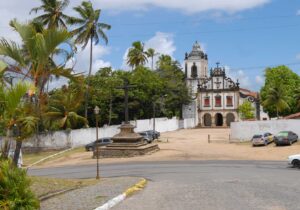
Convento e Igreja de Santo Antônio em Igarassu PB05:24
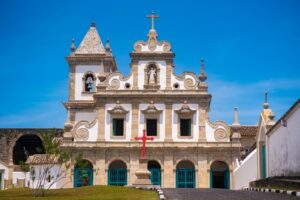
Convento e Igreja de Santo Antônio em Cairú BA02:06
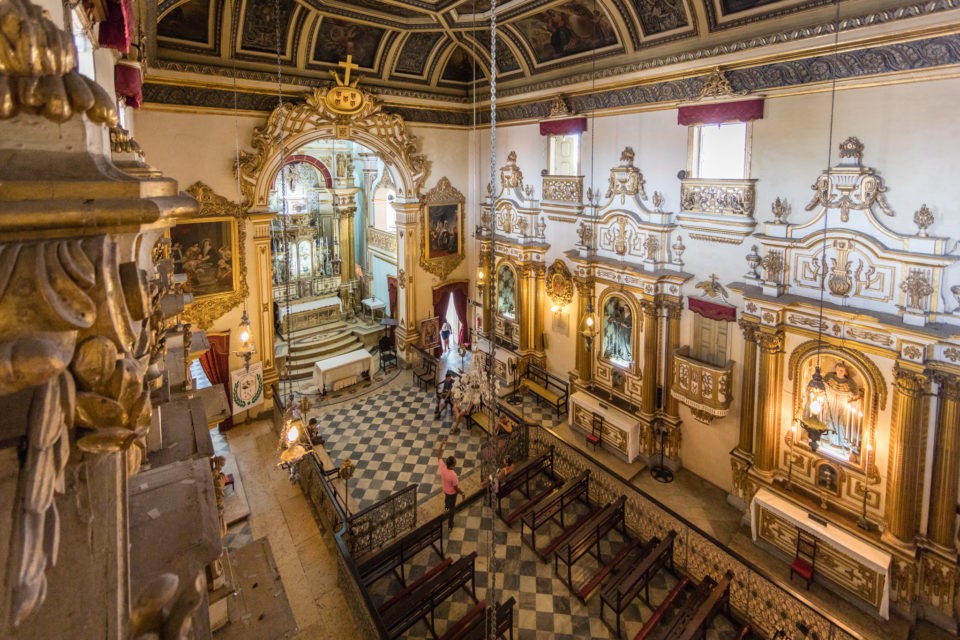
Igreja da Ordem Terceira de São Francisco em Salvador09:56

Conheça a Igreja de São Francisco em Salvador BA04:38
Characteristics of the colonial Franciscan monasteries
1. Urban planning
Like the majority of religious orders in colonial Brazil, the Franciscans located their monasteries and churches on hilltops near the sea, bays, lagoons or estuaries, imposing them as an element of prominence and a point of reference on the local landscape and population.
This location had an important symbolic value, as it represented a Church at the service of Portugal, as well as acting as an element of protection against possible threats of foreign invasion.
However, the Franciscans did not confine themselves to the city limits, seeking greater contact with the nature that the Order favoured.
In almost all cases, the main façade of the church faced the city, while the church and the convent gatehouse, spaces for socialising, faced the town, and the cloister area (the religious’s retreat) opened onto the natural landscape, often guaranteed by the watercourse.
The presence of the Franciscans in a given place, with their churches preceded by large churchyards, encouraged the opening up of roads leading to the centre of the settlement.
The churchyards, as a transitional space between the sacred and the profane, were places where religious and popular festivities were held, emphasising the scenic characteristics of the monasteries.
2. Regional distribution of the Franciscan Monasteries
2.1 Convent of St Anthony – João Pessoa
In the old city of Parahyba (now João Pessoa), the Convent and Church of Santo Antônio is one of the most complex and beautiful Baroque buildings in Brazil. Situated away from the coast, it eventually became the centre of the city, the cemetery being transformed into a Largo, from where processions still start. Today the convent houses the city’s Museum of Sacred Art, which also organises exhibitions of popular art.
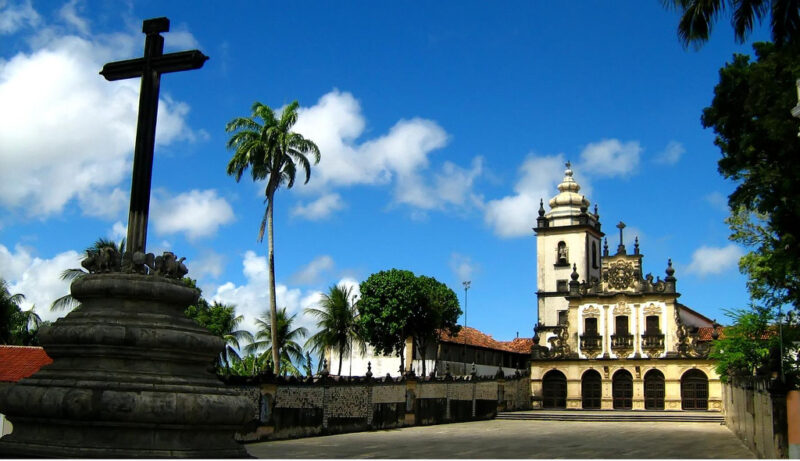
2.2 Convent of St Anthony – Igarassu
In the state of Pernambuco, the Franciscans built five other establishments. In Igarassu, the Convent and Church of Santo Antônio was located by the sea, with the front facing the city, and is considered the most important historical monument in the municipality. Today it houses the Pinacoteca Museum, with one of the most representative collections from the colonial era.

2.3 Monastery of St Francis – Olinda
In Olinda, the architectural complex formed by the Convent of São Francisco, the Church of Nossa Senhora das Neves and the Chapel of the Third Order of São Roque was built on top of one of the seven hills that protected the former seat of the Pernambuco captaincy. The façade of the building faces the city, and its path became a slope that connects several other historical monuments in the city. In 1982, the historic centre of Olinda was declared a World Heritage Site by UNESCO.

2.4 Convent of St Anthony – Recife
In Recife, the construction of the Convent and Church of Santo Antônio and other associated dependencies of the Third Order of São Francisco das Chagas form a Franciscan complex of great historical importance.
Situated at the confluence of the Capiberibe and Beberibe Rivers, where Maurício de Nassau once built his Palace of Friburgo, the monastery occupies a site of great nobility.
During the Imperial period, the cloister became the most important square in the city, and to this day a great festival is held there in the honour of Saint Francis, with a procession, mass, novena and kermesse, which attracts a large crowd.
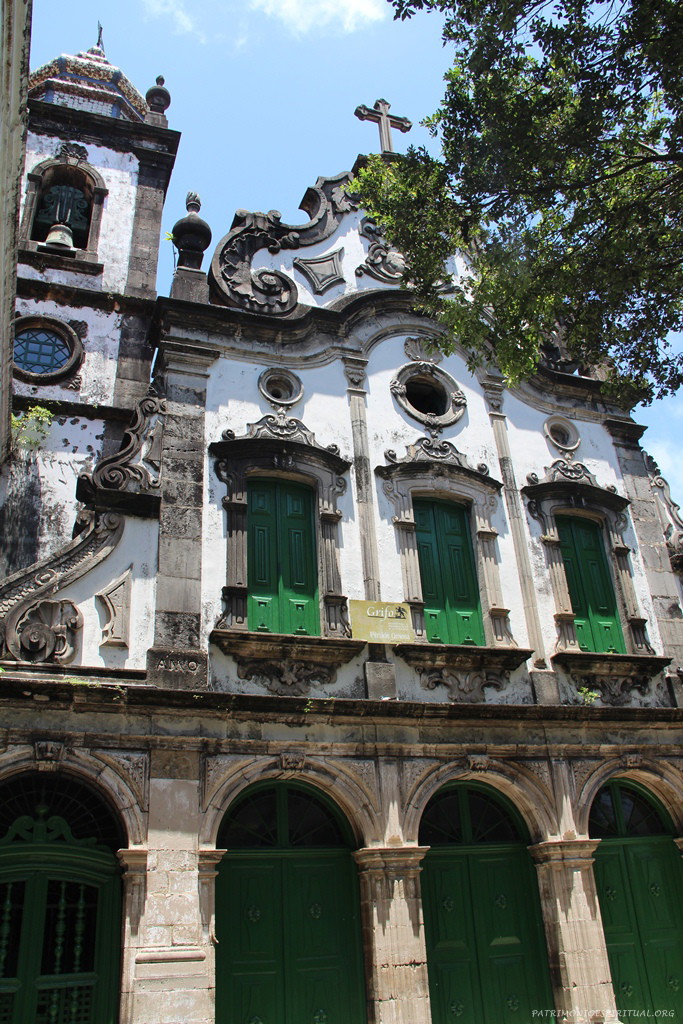

2.5 Monastery of St Anthony – Ipojuca
In the municipality of Ipojuca, the Convent and Church of Santo Antônio (or São Francisco) stands on a hill overlooking the river of the same name. During its annual festival on 1 January, the church attracts a large number of pilgrims. In addition to the liturgical celebrations, the cemetery serves as a stage for popular attractions.

2.6 Monastery of St Anthony – Sirinhaém
The Convent and Church of Santo Antônio in Sirinhaém is located on the banks of the river of the same name, at the highest point of the city. It is one of the most important historical monuments in Sirinhaém, considered one of the most traditional cities in the state.
The town, which preserves characteristics of a medieval Portuguese urban articulation, has its convent and surrounding area at risk of deterioration due to the unregulated occupation of the surrounding area.
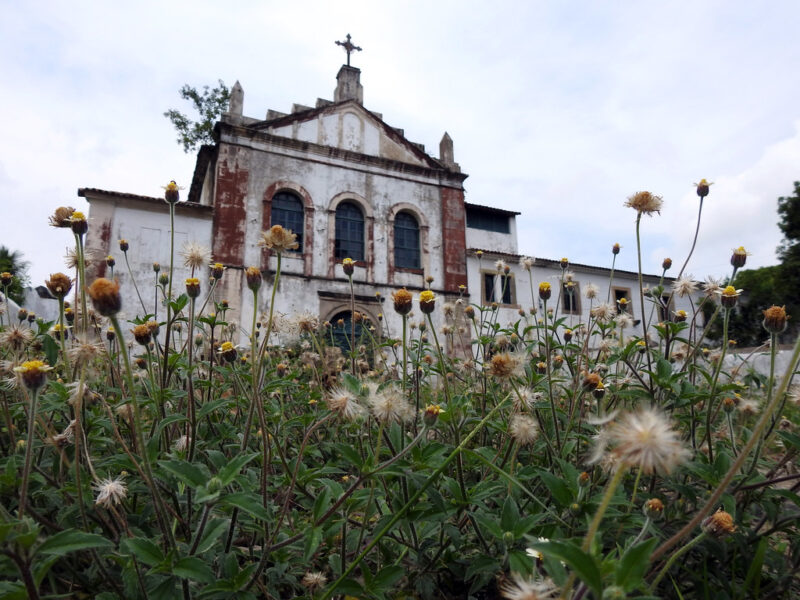
2.7 Monastery of St. Francis – Marechal Deodoro
The state of Alagoas has two Franciscan institutions. The first, the Convent and Church of St Francis (or St Mary Magdalene), in what is now the municipality of Marechal Deodoro, was built on the banks of the Manguaba Lagoon, a fishing depot that economically supports a large part of the local population. The monument is now a museum and its surroundings are an important centre of tourist attraction and public utility. The Educandário São José and a unit of the Federal Centre for Technological Education (CEFET) have been built on the same site.
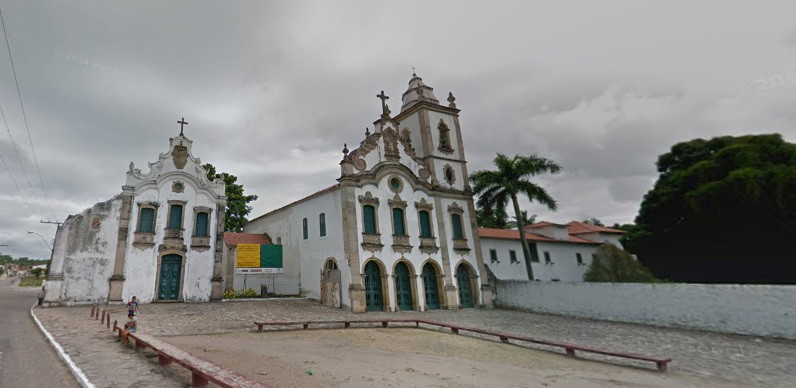
2.8 Monastery of St. Francis – Penedo
The second Franciscan site is the complex formed by the Convent of San Francisco and the Church of Our Lady of the Angels, located in the municipality of Penedo, built on a cliff that descends to the River San Francisco. The cemetery, now transformed into a square, forms a complex of great urban expression and is a convergence centre for the city’s socio-cultural activities.
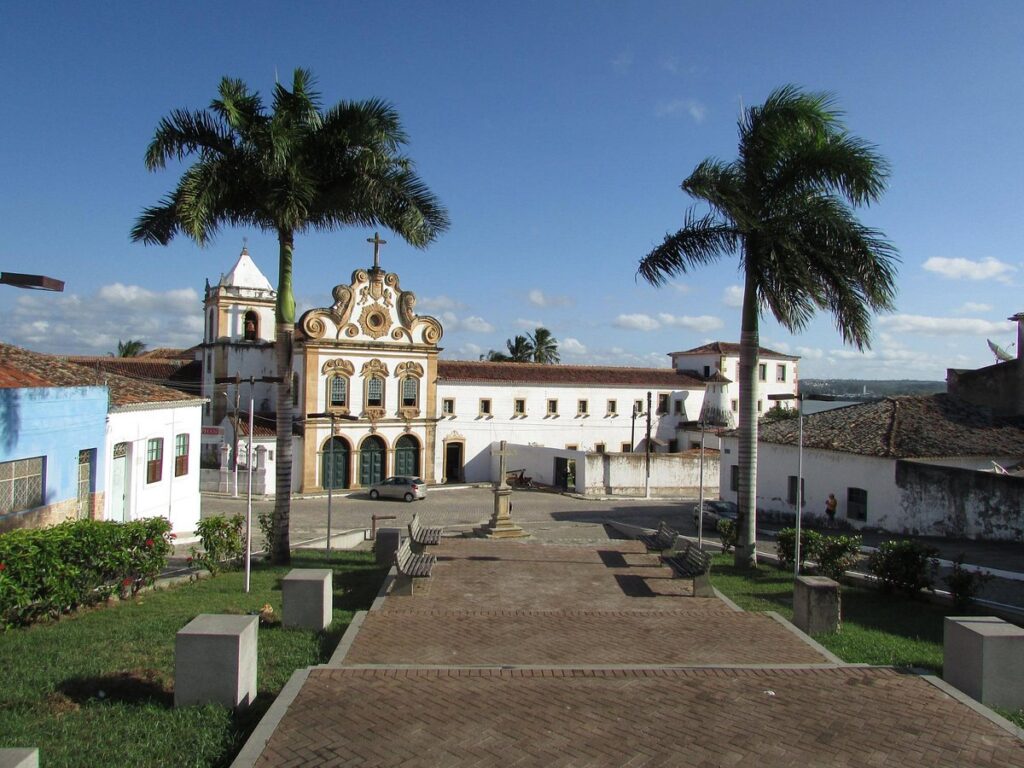
2.9 Monastery of St Francis – São Cristóvão
In Sergipe, in the town of São Cristóvão, the Convento de São Francisco stands out, with its Church of Bom Jesus, located in the upper part of the town, near the mouth of the Sergipe River. The old churchyard, now converted into the Praça de São Francisco, attracts large crowds during religious festivals such as the Senhor dos Passos.

2.10 Monastery of St Francis – Salvador
The last four remaining Franciscan monasteries in northeastern Brazil are located in the state of Bahia. In the capital, Salvador, the complex of the Convent and Church of São Francisco and the Church of the Third Order of São Francisco da Penitência was built in the upper part of the city. A wide avenue connects the monument to the Terreiro de Jesus and the Sé Primaz do Brasil, forming an area of great cultural, religious and civic interest.
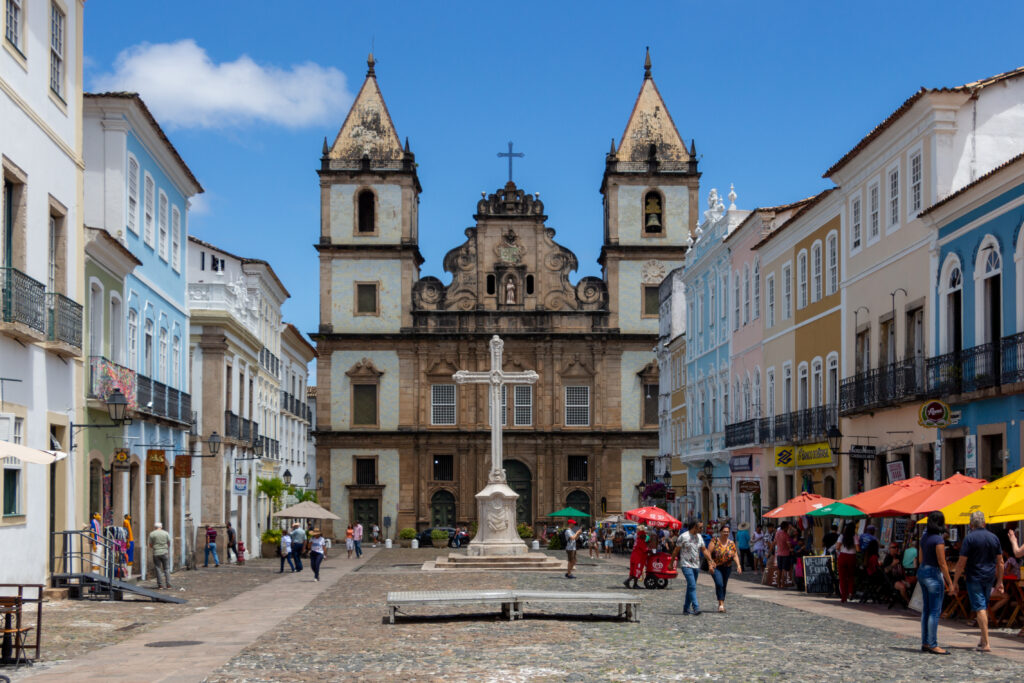
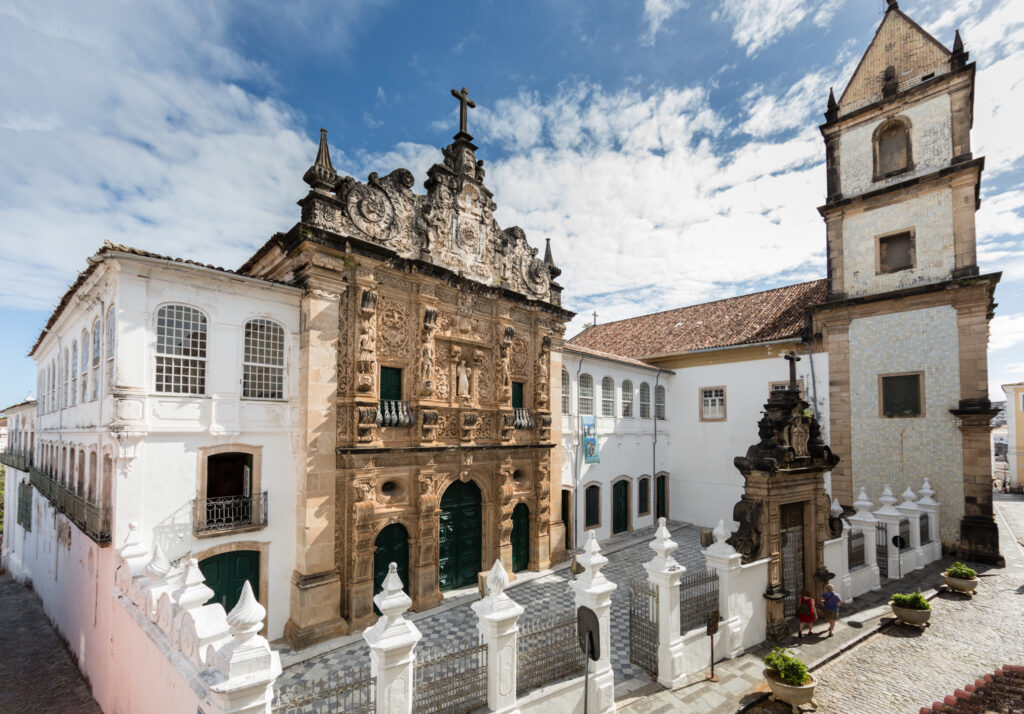
2.11 Convent of Santo Antônio – São Francisco do Conde
The Convent and Church of Santo Antônio, in the town of São Francisco do Conde, is located at the mouth of the Sergimirim River, which flows into the Todos os Santos Bay. This is one of the main tourist attractions of the Recôncavo region of Bahia.
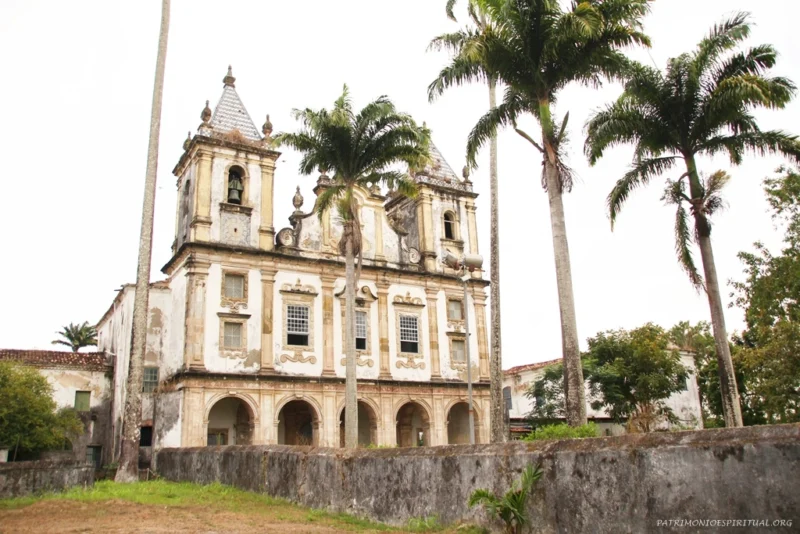
2.12 Monastery of St. Anthony – Paraguaçu
In Paraguaçu, the Convent and Church of Saint Anthony was built on the banks of the estuary of the river of the same name. Although badly damaged, the building still bears the witness of the idea of contemplation, so dear to Franciscan thought.
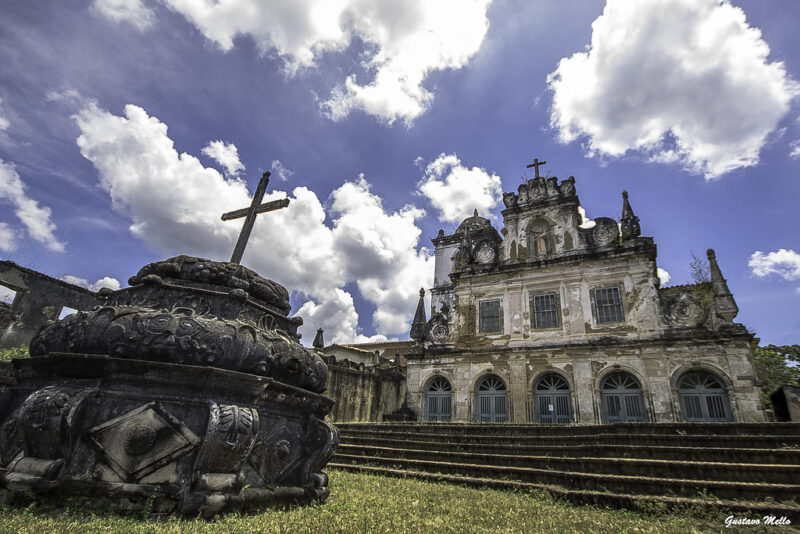
2.13 Monastery of Santo Antônio – Cairú
The Convent and Church of Santo Antônio in Cairú stands on a hill dominating the landscape of the island of Cairú. Its cemetery is still the site of the main local religious festivals, such as Nossa Senhora da Conceição and São Benedito, which attract large crowds of worshippers and tourists.
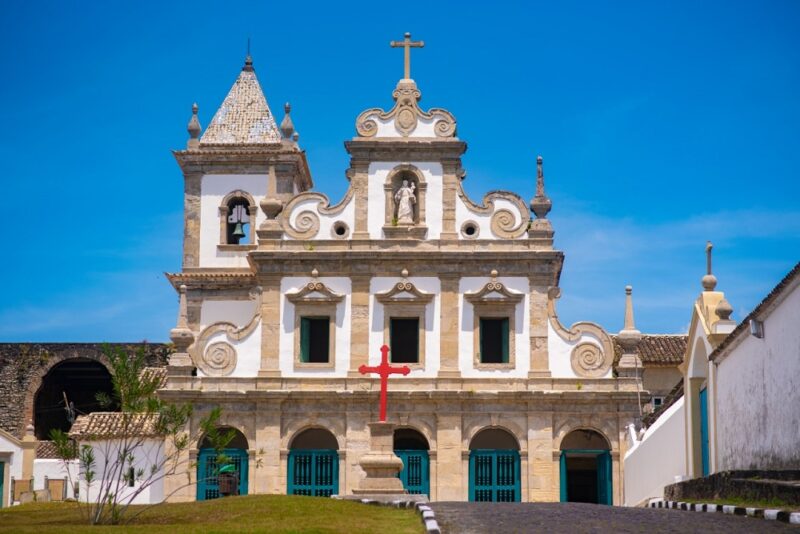
2. The Architecture of Franciscan Monasteries in Colonial Brazil
2.1 The first building cycle: Simplicity and adaptation to the climate
The first cycle of Franciscan construction in Brazil was characterised by simple buildings, as initially advocated by the Order. However, their early churches already had a tower and were always preceded by a porch, an adaptation to the colony’s climatic conditions, as shown in Frans Post’s painting Igaraçu from the time of the Dutch invasion.
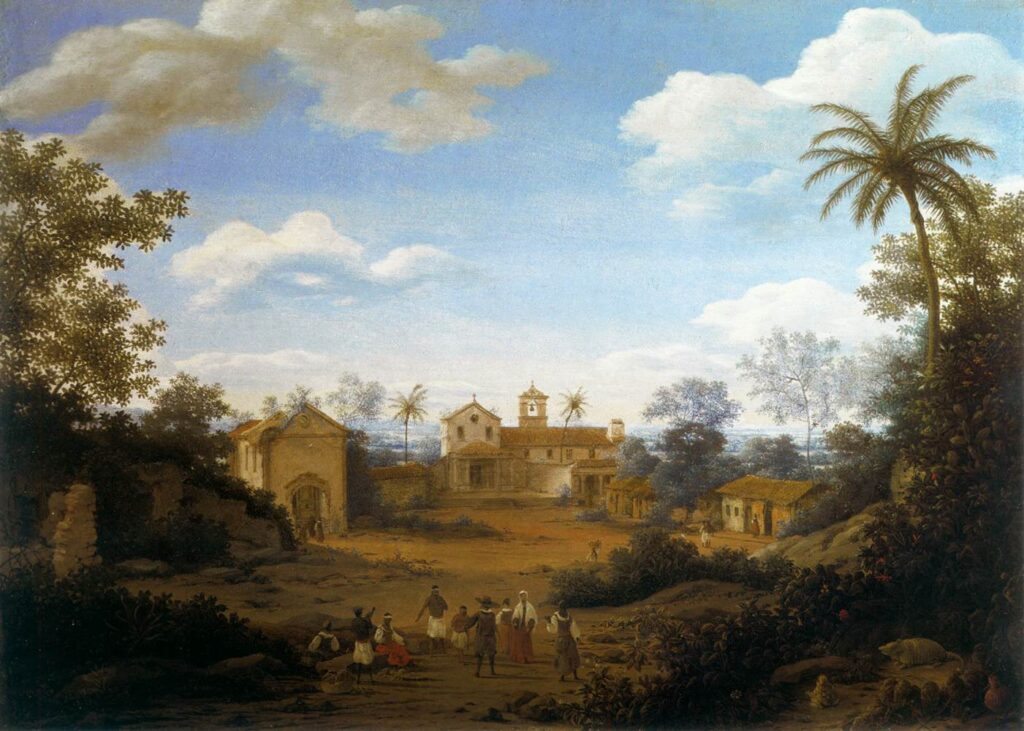
2.2 The second building cycle: Architectural splendour
The second cycle can be considered the period of splendour of Franciscan monastic architecture in the Northeast, which began after the expulsion of the Dutch in 1654 and lasted until the middle of the 18th century. This period corresponds to the phase of expansion and enrichment of the monastic orders, parallel to the strengthening of the presence of the Portuguese Crown in Brazil after the restoration of independence in 1640.
2.3 Structure and Symbolism of the Monastery
The architecture is now on two levels, although it retains the same spatial logic: the cloister as the centrepiece. This quadrangular courtyard, surrounded by open galleries, contains a garden and a fountain, symbolic of the Franciscan Eden. It is surrounded by wings with specific functions:
a) The social dimension
This includes the gatehouse, the parlour, the chapter house and the consistory. The first two, which are adjacent to the church and open onto the cloister, allow the secular and religious worlds to meet and require decorative features.
b) The animal dimension
This includes the refectory, kitchen, services and cells (on the upper floor). These facilities are functional but also structured to facilitate daily monastic life.
c) The intellectual dimension
This includes the study rooms, the workshops and above all the library. This room has an elaborate doorway, rich bookshelves and pictorial decoration on the ceiling, reflecting the Franciscan value of knowledge.
d) Spiritual dimension
This corresponds to the area of the church and the sacristy. The church always began with the choir, followed by the nave. The apse was the last, but its monumentality increased during the second cycle.
2.4 Architectural and aesthetic elements
As Alberto José de Souza points out, the buildings of this cycle are more learned and baroque in design, with an emphasis on scenographic character and dramatic decoration. The most emblematic example is the Cairu Monastery, designed by the Portuguese architect Brother Daniel de São Francisco, who also designed the Paraguaçu Monastery.
The vertical and horizontal sections are marked by stone pillars and architraves. On the upper floor, the triangular pediment is replaced by a pediment with a busy profile, with fins, volutes and pinnacles, a Mannerist decorative feature to hide the gable.
On the ground floor, the traditional porch is replaced by a gallery with arcades in a perfect circle, integrated into the volume of the building.
Brother Jaboatão noted similarities between the monasteries of Recife and Ipojuca, attributed to Master Gonsalves Olinda.
Most of them have a single tower set back from the façade. Exceptions are the churches of Salvador and São Francisco do Conde, which have two towers aligned with the central body, following the models of late Portuguese Mannerism.
Over time, some towers evolved from the pyramidal tops of the 17th century to the bulbous shapes typical of the 18th century, as in the churches of João Pessoa, Recife and Marechal Deodoro.
2.5 Layout and internal organisation
The interior of the Franciscan churches adopted the Jesuit plan: a single nave with an inserted transept and a narrow choir. The main altarpiece is at the back of the nave, flanked by two others next to the transept arch.
Opposite the nave is the chapel of the Third Order, often richly decorated.
Two aisles flank the choir. The one on the Gospel side, called the via-crucis, contains images of the Passion of Christ and leads to the sacristy, which is usually transversal and rich in symbolism and decoration: gilded altarpieces, painted ceiling, carved cupboards and cabinets. A monumental stone washbasin is usually attached to it.
At the end of the nave, above the narthex, is the choir with organ and presbytery, accessible from the gallery of the overcloister. Music and chant have a liturgical significance in the Franciscan tradition.
2.6 Exterior space: The fence and its uses
The monasteries had a fence, an area at the back dedicated to orchards, vegetable gardens, water collection and recreation for the monks. It was also used for isolation, prayer and meditation, fundamental functions of monastic life.
3. Visual arts
They are mainly represented by the richness of the interiors of the churches and sacristies, designed to impress.
The Franciscan artistic collection in the Northeast of Brazil is made up of gilded wood carvings, images (in wood or terracotta), ceiling paintings (coffered or illusionistic), paintings, tiles, utensils and chairs.
3.1 Carving
It was mainly through carving, especially altarpieces, that the interiors of these churches acquired much of their expressive power as a sacred space, becoming an indispensable element and the main ornament. We know that sculpture has always been recognised as one of the most legitimate plastic manifestations of Portuguese and Brazilian art, whose visual potential painting only reached in the 18th century.
3.1.1 The first decorative cycle
The earliest Franciscan altarpieces in northeastern Brazil certainly corresponded to those developed during the last phase of Mannerism or the transition to Baroque in Portugal.
They were made in the first decades of the 17th century for the Order’s original chapels. Unfortunately, only a few fragments of these mannerist altarpieces remain, such as the base of a column in the church of the Paraiba convent.
3.1.2. The Second Decorative Cycle
This cycle belongs to the first phase of the Baroque in Portugal, a period that lasted from the middle of the 17th century to the first decade of the 18th century in the metropolis, and about twenty years in Brazil.
It corresponds to the beginning of the Golden Age. This period includes: the carving of the Golden Chapel of the Third Order in Recife; the altarpiece of the choir and some collaterals of the church of the Convent of St Francis in Salvador; the altarpieces of the choir and the sides of the church of the Convent of St Francis in Marechal Deodoro; and the altarpieces of the high altar and the sides of the Chapel of the Third Order of St Francis in João Pessoa.
The carving was intensely gilded, “a colour par excellence associated with God, whose abundance, although it seeks to express majesty and splendour, should be understood first and foremost as one of the most persuasive ways of attracting the believer’s senses”.
It develops opulent forms that in many cases spread like vegetation over the walls and mouldings of the coffered ceilings, where the painting is mainly concentrated.
The structure of the altarpiece is dynamic and scenographic, articulated in a single body supported by spiral columns, a movement that continues in the pediment in concentric archivolts and surrounds a large central cloakroom designed to contain in majesty the devotional image of the altar.
The pediment is generally closed with the emblem of the Order of Saint Francis. The ornamental motifs refer to Christian iconography, in a naturalistic vocabulary that is predominantly phytomorphic, such as the acanthus leaf (symbol of heroism) and the parra (Eucharistic wine), from which emerge angelic figures (messengers of divine love) and the pelican bird (blood of Christ).
3.1.3. The third decorative cycle
During the reign of King João V (1707-1750), the height of the absolute monarchy, when “Portugal was the gold of Brazil”, the Baroque taste imported from Rome prevailed in the carved decoration of Portuguese and Brazilian churches, coming from the workshop of the palace under construction in Mafra, where Italian artists collaborated under the direction of the Italianised German Ludovice.
Of note from this period are the side altarpieces of the convent church of Igarassu; the chapter house of the convent of Olinda; the main altarpiece of the church of Nossa Senhora dos Anjos, in Penedo (AL); the side altarpieces of the transept (1741-1743) of the convent church of São Francisco, in Salvador (BA); the main and side altarpieces of the chapel of Terceiros, in João Pessoa.
The structure of the composition emphasises the architectural character, the dynamism, the scenographic treatment and introduces large statues in imitation of Roman monuments.
The crown, unlike its predecessor, has a broken, open profile and its decoration is completely independent of the idea of prolonging the movement of the supports.
3.1.4 The fourth decorative cycle
This corresponds to the Rococo period, in which carved decoration is characterised by a precious and refined layout, using volutes in curved movements, counter-curves, twisted and frayed conchoids (the so-called rocailles), phytomorphic and floral stylisations (palms and feathers) and elements considered ‘exotic’, such as Chinese, Indian and African.
This shows an art that appropriated artistic values other than those of Western culture and that emphasised refinement and optical sensations on the surface, enhanced by the gilding of the relief on a light background.
In ecclesiastical decoration, the choice of iconography shows the intention to combine sacred symbols with profane ornamentation.
Most of the carved wood decorations in the Franciscan temples of the northeast from the mid-18th century to the first two decades of the 19th century used the Rococo style, but not in its “purity”, as was the case with all colonial art of the period.
It coexisted with baroque and neoclassical ornamental elements, as can be seen in the altarpieces of the Church of Nossa Senhora das Neves and the Chapel of São Roque in Olinda; the main altarpiece of the Church of Santo Antônio in Recife; and the main altarpiece of the Church of Santo Antônio in Igarassu, important examples of the period.
This carving, lighter and more delicate, denounces the exhaustion of the gold cycle and the incorporation into an art that sought its expression in the exquisite decoration of the European court palaces of the time.
3.2 Images – the principal invocations
Among the images that make up the Franciscan collection in the north-east, the following stand out Christ Crucified; those of Marian devotion – Our Lady of the Conception (the most common), of Sorrow, of Pity and of the Rosary; and, of course, that of the founder of the Order, St Francis of Assisi (in the most common form of the vision of Mount Alverne and the Wounds) and that of St Anthony, the great disseminator of Franciscan doctrine and patron saint of Lisbon.
Also enthroned on Franciscan altars are the images of Saint Anne the Teacher, Saint Joseph, Saint Louis of France, Saint Roque, Saint Benedict, Saints Cosme and Damian, Saint Rose of Viterbo, Saint Elizabeth of Hungary and Saint Elizabeth of Portugal. Whether in the restrained and hieratic form of Mannerism, the dramatically expanded form of the Baroque or the refined form of the Rococo, all these images have a great doctrinal effect, both because of the power they exude in representing suffering, purity, the example of a virtuous life, poverty and, often, martyrdom – a sanctification promoted by the Catholic Church through the Counter-Reformation as a way for the faithful to establish a link with the divine.
3.3 Painting
Although painting did not enjoy the same prestige as architecture and sculpture in the first decades of the colonial period, it began to assert itself as a means of visual expression, particularly in the 18th century, the golden age of Baroque production in these countries, in the form of individual paintings, parietal panels and monumental ceiling panels.
The pictorial genre that best expressed colonial religious themes was that of church ceilings, in coffered ceilings or in illusionist perspectives.
Coffered ceiling paintings included figurative panels depicting the lives of saints, framed by sculptural work similar to woodcarving. The period of greatest production was at the beginning of the 18th century.
Although they were less learned than the illusionist paintings – due to their less developed perceptual resources and simplified palette – they were effective in their catechetical purpose, offering multiple opportunities to illustrate the teachings addressed to the congregation and to identify them with the scenes depicted.
And they produced beautiful aesthetic effects when well combined with the carving.
4. Final considerations
We have presented arguments which, in our opinion, amply justify the inscription of the thirteen Franciscan monasteries of the North-East as World Heritage Sites.
From a urban perspective, all these ensembles remain centres of historical reference and sociocultural interaction in the places where they were built.
In architectural terms, their buildings form a group characterised by unprecedented solutions in the composition of façades, particularly from the second half of the 17th century onwards.
This innovation is particularly evident in the use of arcaded porticos facing the churchyard and the pediment with volutes and counter-volutes, often accompanied by recessed belfries.
In the field of carving, the Franciscan churches of the north-east are not only a valuable object for stylistic analysis, but also offer important clues for understanding the history and culture of the colonial period.
It is known that Franciscan monasteries in Brazil were always built at the request of the local community, which was also responsible for their maintenance. Thus the richness of the interiors of the temples – especially those of the Third Orders, which were in constant dialogue and even aesthetic competition with those of the Monastic Orders – can be explained in the context of a restored Portugal investing heavily in its prosperous and promising viceroyalty.
The period of greatest decorative splendour, from the early to mid-18th century, coincides with the introduction of the Baroque into the Luso-Brazilian world. This artistic movement was fuelled by the discovery of precious minerals in the Minas Gerais region and by the growing activity of the brotherhoods of masons, who became the main commissioners of works of art.
These observations also apply to the study of painting. As for painting – whether in parietal panels, coffered ceilings or works in illusionistic perspective – the remaining collection undoubtedly constitutes a valuable visual document of the Baroque on Brazilian soil.
Finally, the collection of tile panels in the Franciscan monasteries of the Northeast is one of the most significant in Brazil. Its iconographic programme is an essential source for understanding not only the history of the Franciscan Order, but also the Baroque and Rococo periods of the Luso-Brazilian world.
For all these reasons, there is an urgent need to establish policies for the preservation, restoration and revitalisation of this invaluable heritage, promoting its integration into the cultural context of contemporary Brazilian society.
Conservation is, after all, preserving the past through a project of building the present – with an eye to the future.
Franciscan monasteries and churches in the colonial period – urbanism – architecture – plastic arts
Publicações Relacionadas
The culture of Northeastern Brazil: how it originated, influenced and flourished
Graciliano Ramos: A Literary Icon of Brazilian Northeastern Life
Northeastern architecture marked by typical features of colonial structures
Origin of Umbanda: Discover the History of this Brazilian Religion
Monte Santo in Bahia: History and Religious Tourism
Exploring Capoeira in Salvador: A Martial Art Rich in History
The rhythm of Candomblé in Bahia
Discover the Magic of Iemanjá Festival in Salvador de Bahia
Bobbin lace and embroidery: predominant handicrafts in Ceará
King Momo, Pierro, Harlequin and Colombina - Carnival characters
Monte Pascoal National Park: Pataxó culture and Brazilian history
Colours of houses and buildings in the colonial architecture of the northeast
History of Afro-Brazilian Religions: Candomblé and Umbanda
The French artistic mission and the legacy of Jean-Baptiste Debret
The 7 north-eastern rhythms and musical styles that enchant Brazil
Woodcuts and Cordel Literature in Northeastern Brazil
Musical styles, rhythms, singers and composers of northeastern Brazil
Bahia joins the ethnic tourism route
This post is also on:
![]() Português
Português ![]() English
English ![]() Deutsch
Deutsch ![]() Español
Español ![]() Français
Français



















